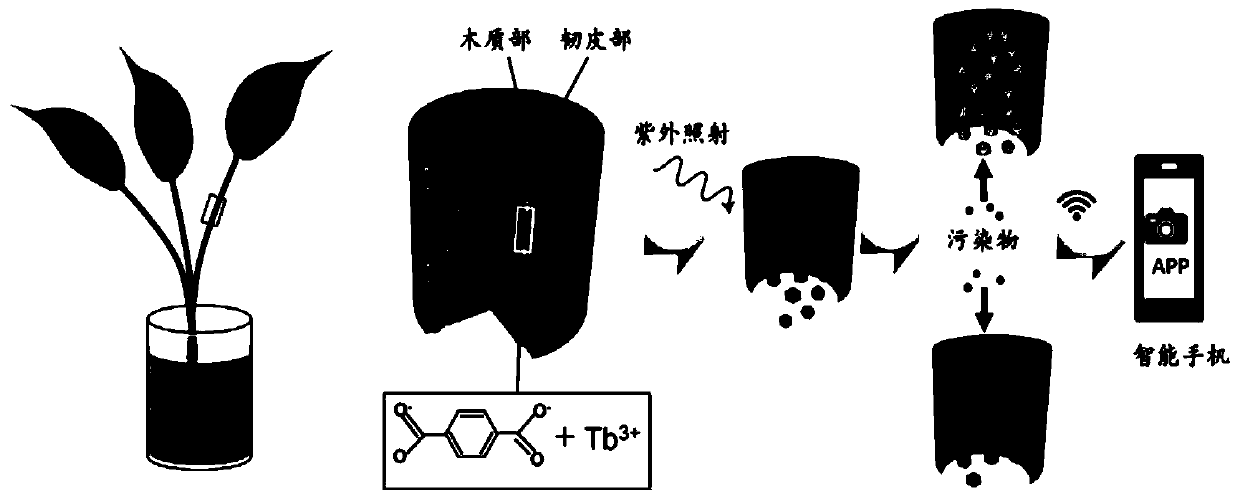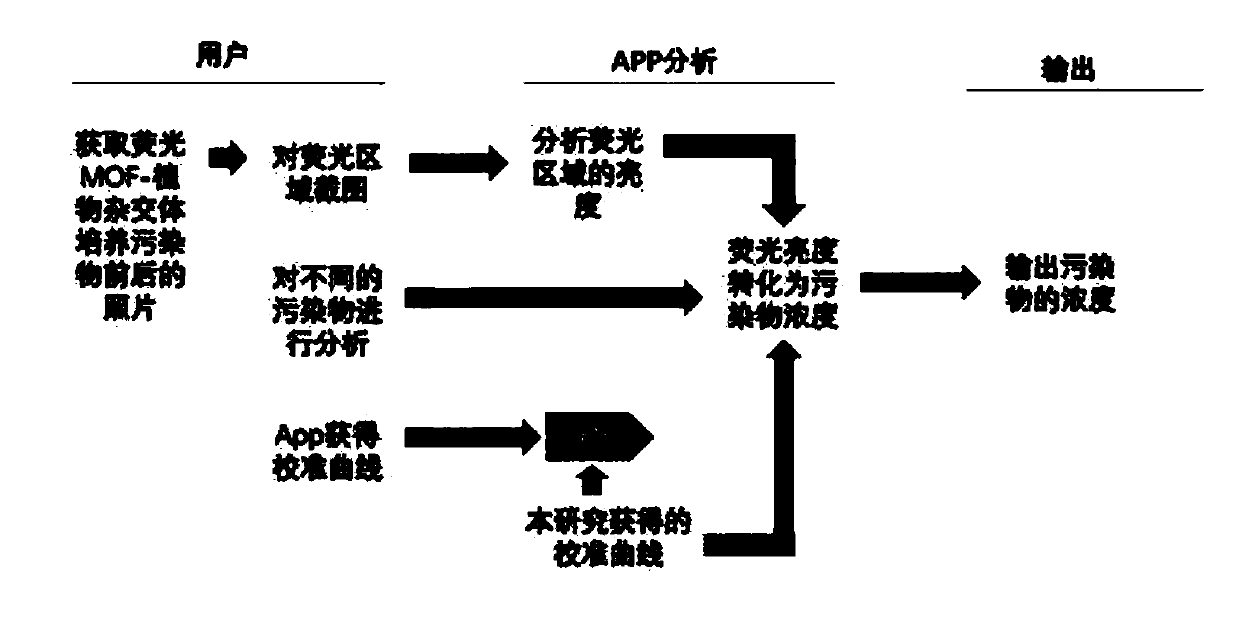Method for detecting water pollutants based on fluorescent MOF-plant hybrid
A water pollutant and detection method technology, applied in the field of pollutant detection, can solve the problems of long-term toxicity, difficult collection of MOF nanoparticles, etc., and achieve the effect of reducing pollution and detecting sensitively
- Summary
- Abstract
- Description
- Claims
- Application Information
AI Technical Summary
Problems solved by technology
Method used
Image
Examples
Embodiment 1
[0069] (1) Material preparation: plant syringa was purchased from Flower Power Garden Center Glenhaven (New South Wales, Australia), see image 3 . The whole plant symphysis was used to grow fluorescent MOF in situ, and symphysis can grow in water, which is an ideal choice for aqueous culture to form fluorescent MOF-plant hybrids. Fresh plants were cultured in tap water (the water was changed every two days, and the cultivation water always had enough oxygen), and the roots were washed with tap water before the experiment. Terbium chloride hexahydrate (TbCl 3 ﹒ 6H 2 O) was purchased from Sigma Aldrich (Australia). Disodium terephthalate (Na 2 BDC) was purchased from TCI (USA). All other reagents were purchased from Sigma Aldrich (Australia) and used without further purification.
[0070] (2) Pure Tb 2 (BDC) 3 Formation of MOFs: Separate preparation of TbCl in deionized water 3 ·6H 2 O (20mM, 1mL) and Na 2 (BDC) (20 mM, 1 mL) solution. The two solutions were mixed ...
Embodiment 2
[0079] Steps (1)-(4) are the same as in Example 1.
[0080] (5) Detection of environmental pollutants by fluorescent MOF-plant hybrids: Enter the fluorescent images of fluorescent MOF-plant hybrids before and after 4 hours of pollutant cultivation under the excitation of a UV lamp at a wavelength of 254 nm in the smartphone App. Images of the MOF-plant hybrids were captured using a smartphone camera and then cropped out for fluorescent regions. Images cropped from your smartphone camera roll can be loaded directly into the app. The average hue-saturation value (HSV) is obtained by converting the red-green-blue (RGB) values of each pixel from the cropped image through a matrix transformation algorithm. Further establish the model between the HSV of the image and the concentration of pollutants, obtain the Δ intensity by clicking the "GenerateΔIntensity and Concentration" button in the application, calculate the linear fitting equation of different analytes through the Origin...
PUM
 Login to View More
Login to View More Abstract
Description
Claims
Application Information
 Login to View More
Login to View More - R&D
- Intellectual Property
- Life Sciences
- Materials
- Tech Scout
- Unparalleled Data Quality
- Higher Quality Content
- 60% Fewer Hallucinations
Browse by: Latest US Patents, China's latest patents, Technical Efficacy Thesaurus, Application Domain, Technology Topic, Popular Technical Reports.
© 2025 PatSnap. All rights reserved.Legal|Privacy policy|Modern Slavery Act Transparency Statement|Sitemap|About US| Contact US: help@patsnap.com



